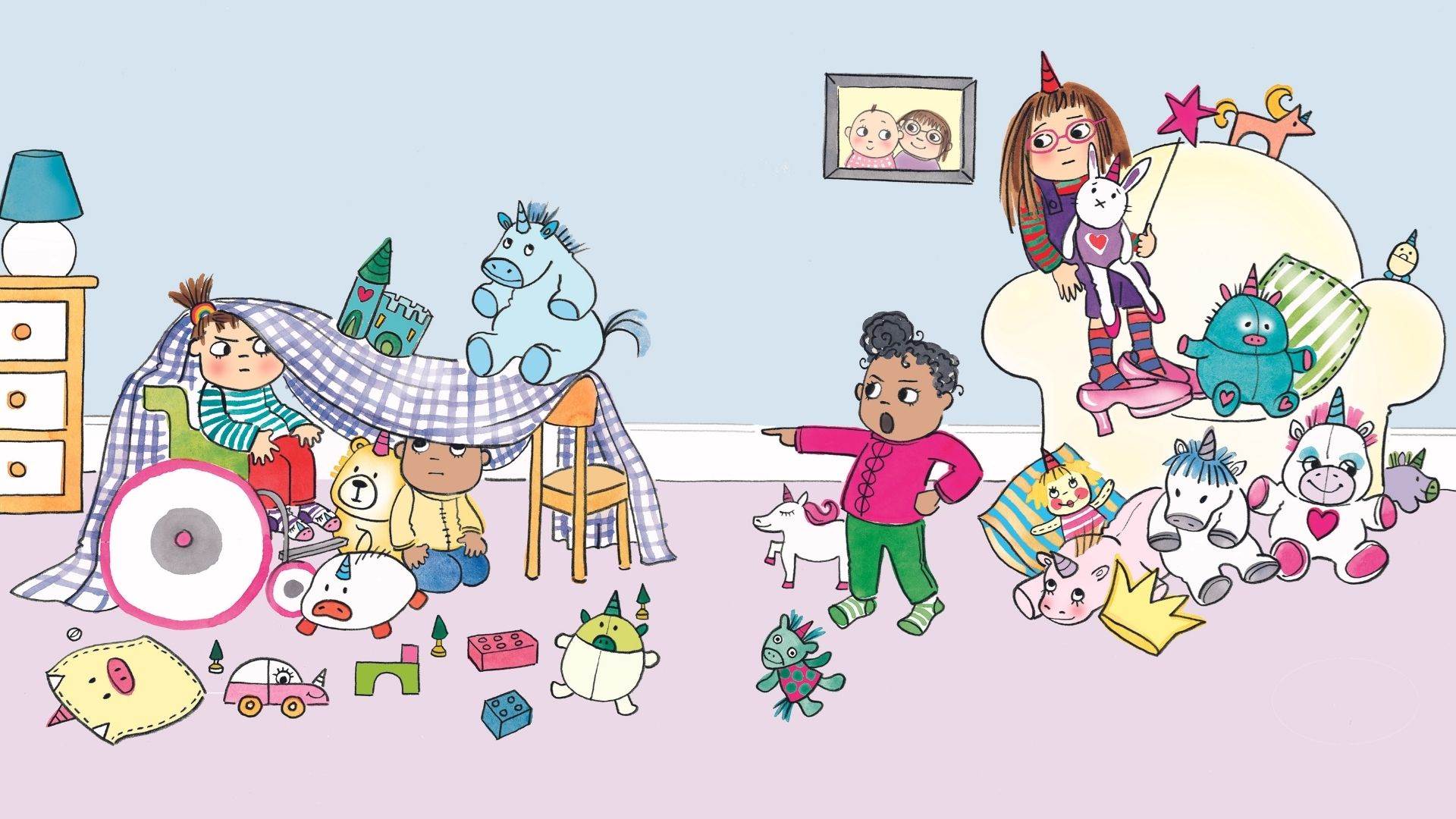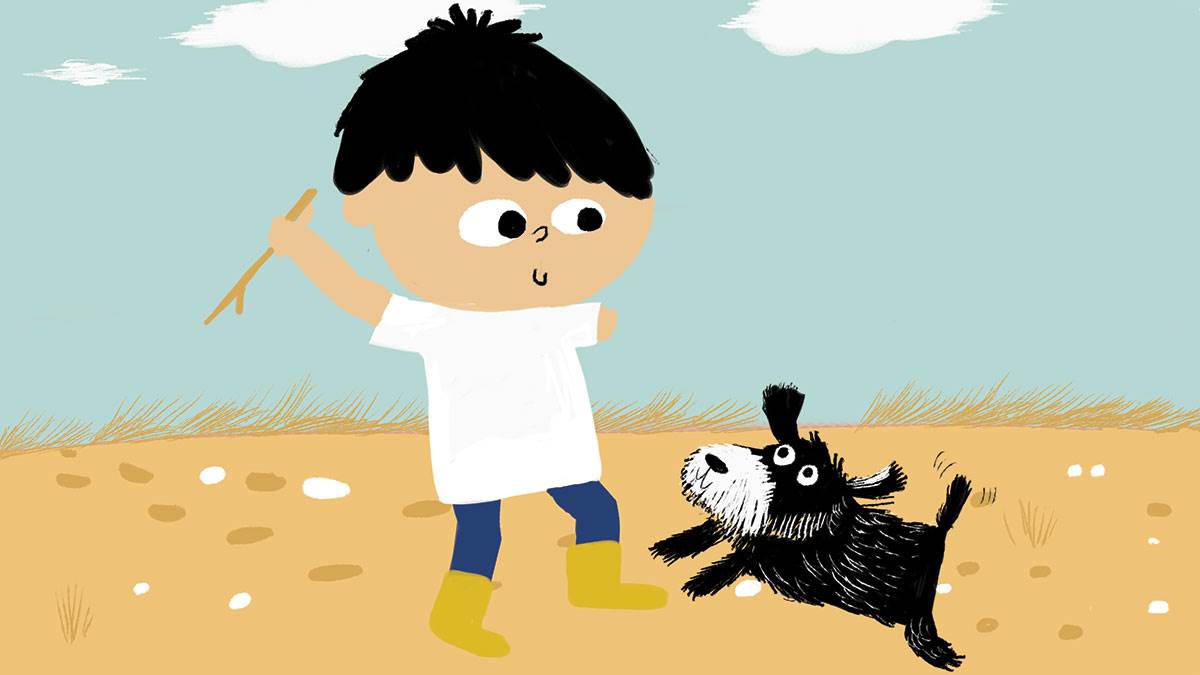"What's this book got to do with me?" Why children's books need to show disability and diversity
Published on: 05 May 2022
Four Bad Unicorns author Rebecca Patterson explains why all children have the right to see themselves in books - and what some children's books get wrong.

Feeling disengaged from books
Most cash-strapped primary schools like the one I work in don’t get many new books. Sometimes I’ll grab a book from the shelf and start reading a long-forgotten story published in the 1980s or 1990s, where everyone is white and middle class and living in houses with lovely banisters, or in a rural idyll where women bake cakes and men chop stuff and dash about in tractors. The lives depicted are far removed from those of the children I’m reading to. Before I’ve read two pages, some of my audience decide it’s more fun to go for a wee and wash their hands really slowly.
My own experience of feeling disengaged from a picture book happened a long time ago. My mum read me and my little sister, Susanna, a story, a typical picture book of the time with gentle pastel-coloured 1970s drawings. It’s about a little sister who runs away and hides in a field of long grass until her big sister gets so upset looking for her that the little one pops out of her hiding place and comforts her big sister and they both realise how much they love each other.
I guess Mum thought we’d relate to this charming tale of sisterly love. And maybe we did. But I also remember feeling conflicted - um, Mum! My sister’s never going to be running off anywhere! Did you forget? She’s disabled! I loved my little sister but the only running off was done by me when I parked Susanna on a Bolton street corner and said, “Back in a minute!”
 Illustration: Nadia Shireen
Illustration: Nadia Shireen
Big stuff bonded us, unlike other little girls
Susanna was born with cerebral palsy. Obviously my mum knew we weren’t two kids who could both run about in grass, she just saw a cute book about sisters. Sisters who loved each other, just like us. But the story irked me. Even by five or six I’d done plenty of explaining to other children who asked what was wrong with Susanna. Playing out in our street and telling some kid, “She’s still in a buggy ‘cause she can’t walk.”
I don't know if Susanna considered her disability when we looked at picture books. She certainly saw herself in Russell Hoban’s Frances and she loved that she looked just like the cute long-haired monster hanging from a tree in Where the Wild Things Are. Even though she couldn’t hang from a branch, we can all relate to characters that aren’t exactly like us, but that book about the two sisters running about upset me. It negated something crucial in my relationship with my own little sister, the responsibility I had for her and the unfair limitations she had in her life. Big stuff that bonded us unlike other little girls. And I can only assume that there are kids who feel a profound disconnection to the stories I read to them in class. Does the little girl whose daddy is in prison smart inside when she sees that daddy coming home in The Tiger Who Came to Tea? Experiences like hers and mine and Susanna’s need to be addressed in children’s books along with other kinds of diversity.
I have wanted to write about Susanna for so long. She’s such a huge part of my life but I have held back as her disability isn't my story, it belongs to her.
But then I kept seeing well-meaning picture books featuring a disabled character. You know the one, the eternally happy child whose disability is worn like a superpower and who is held up as someone we can all learn from.
I wanted to write about a real person
I wanted to write about a real person like Susanna. A person, who as a child, was often used as a supporting wall in some tent like construction because her wheelchair had useful handles to tie the rug roof to. A person who was routinely removed from her wheelchair and plonked on the floor so some child could “try out” the wheelchair – as if it was just an alternative to the scooter or tricycle. I include these events in my story, the indignities of being a disabled child. How did she put up with being hauled about by hapless children? One time a small girl lifted her and staggered, carrying her across my room saying, “Susanna is on my side now! My team!” But Susanna had had enough. She was done taking sides and bit the girl's arm, who screamed and dropped Susanna on the floor. We all got in trouble. I didn’t include this event in my story, but it’s the anecdote that gets Susanna roaring with laughter.
I have written Four Bad Unicorns as a sister and for a sister. It’s not a book about disability, it’s about falling out and making up. A child with a disability might defy doctors' diagnoses and could be one of the most appealing people you know but nothing stops them having terrible playdates. Just ask my sister.
Follow Rebecca Patterson on Twitter
Topics: Bookmark, Disability, Mobility/wheelchair, Inclusive, Siblings, Diversity (BAME), Features
You might also like...
Our pick of some of the best children's books which positively feature disabled characters.
Books with positive images of disability: See the best of the year
Here are the children's books in 2022 that BookTrust think show positive images of disability, as well as titles that may prove useful in discussing disability and inclusive issues with young readers.
Casual inclusion of disabled characters
This list comprises books which include disabled characters within their images and/or story naturally, subtly and often without comment.







